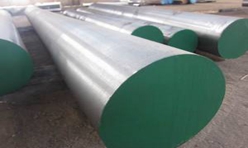DIN 1.2581 H21 Hot Work Tool Steel
1 H21 Steel Introduction:
Tungsten hot work tool steels are of different types, namely, H21 to H26 types. These hot work tool steel have similar characteristics to that of high speed tool steel. The primary alloying elements in tungsten hot work tool steel include tungsten, chromium, carbon, and vanadium. They are resistant to distortion when they are air hardened, and have higher hardening temperature when compared to chromium hot work tool steel. Breakage of the tungsten hot work tool steel can be reduced if they are preheated to operating temperature before use. Thermal shock resistance and toughness of these hot work tool steel can be improved by reducing the carbon content.
We can provide more services:
1、Hardening and tempering
2、Vacuum heat treatment
3、Polished bright surface
4、Milling bright surface
5、CNC machine
6、Deep drilling
7、Cut into small pieces
8、Make it closer to the mold
Welcome to inquiry price from drawing
2 H21 Steel Applications:
H21 hot work tool steel is particularly useful for hot forging and blanking dies and punches for making nuts, bolts and other similar small components. Dies, cores, inserts, pins, etc for the die casting of copper base alloys are also prime applications for this steel. Other uses include forming dies, shear blades, hot extrusion dies, mandrels, punches, die holders, ejector discs and extrusion liners.
3 Quality Standard:
ASTM A681 Standard Specification for Tool Steel
4 All Grades Comparison:
| ASTM | AFNOR | DIN | UNI | JIS | B.S. |
|---|---|---|---|---|---|
| H21 | Z 30 WCV 9 | 1.2581 | X 28 W O9 KU | SKD5 | BH 21 |
5 H21 Steel Chemical Composition(%):
| C | Si | Mn | P | S | Cr | W | V | Ni | Cu |
|---|---|---|---|---|---|---|---|---|---|
| 0.26-0.36 | 0.15-0.50 | 0.15-0.40 | 0.030 max | 0.030 max | 3.00-3.75 | 8.50-10.00 | 0.30-0.60 | 0.30 max | 0.25 max |
Smelting Option
1 EAF: Electric Arc Furnace
2 EAF+LF+VD: Refined-smelting and vacuum degassing
3 EAF+ESR: Electro Slag Remelting
4 EAF+PESR: protective atmosphere Electro Slag Remelting
5 VIM+PESR: Vacuum induction melting
Forming Option
1 Hot rolling process
2 Hot Forging: Electro-hydraulic; High-speed-hydraulic; Oil-hydraulic; Precision-forging
Heat-treatment Option
1 +A: Annealed (full/soft/spheroidizing)
2 +N: Normalized
3 +NT: Normalized and tempered
4 +QT: Quenched and tempered (water/oil)
Suface Option
1 Black Surface
2 Grounded: Bright but rough ; Not precision
3 Machining for plate: Bright and precision; Little turning scar
4 Peeled/Turned: Bright and precision; Little turning scar
5 Polished: Very Bright and precision size; Not turning scar
Other Services
1 Cutting: Small pieces
2 CNC Machine: Produce as your drawing
3 Package: Bare/Nylon/Canvas/Wooden
4 Payment:T/T, L/C, O/A(request credit)
5 Transport:FOB/CFR/CIF/DDU/DDP (train/ship/Air)
6 HEAT TREATMENT:
FORGING: Forging of the H21 steels can be performed at 1150°C (2100°F) down to 927°C (1700°F) but not below 899°C (1650°F).
ANNEALING: Pack preferably in a suitable sealed container with spent carburising mixture or cast iron chippings to prevent excessive scaling or decarburisation. Heat to 850°C / 880°C, holding at temperature for sufficient time to achieve uniformity. Cool at less than 25°C per hour to 650°C followed by air cooling. Correctly annealed the tools or parts should not exceed 248 HB.
STRESS RELIEVING: Heat to 600°C / 650°C. Hold for 2-4 hours and furnace cool.
HARDENING: Before heat treatment, sufficient machining should be carried out to remove surface decarburisation. Hardening should be carried out in controlled atmosphere furnaces or
neutral salt baths. Preheat slowly to 800°C / 850°C then transfer to a bath or furnace at
1120°C / 1170°C allowing sufficient time for uniform heating. Quench into warm oil or salt bath
operating at 520°C / 540°C. In the latter case ensure that the tools are allowed to equalise before
completing the quench by cooling in air.
TEMPERING: Tempering should be carried out immediately after proper completion of the quenching operation. Heat to within the 560°C / 675°C range soaking for two to three hours according to section. A second tempering cycle of similar duration is strongly recommended and care should be taken to ensure that the tools are allowed to cool to room temperature al least 50°C higher than that which the tools may be expected to achieve in service. The curve given indicates
typical hardness values obtained on oil quenching from 1160°C and double tempering.
7 Mechanical Properties:
| Properties | Metric |
|---|---|
| Hardness, Rockwell C | 40.0 – 55.0 |
| Bulk modulus | 140 GPa |
| Poisson’s ratio (25°C) | 0.27-0.30 |
| Elastic modulus | 190-210 GPa |
8 Welding:
H21 hot work tool steel can be welded.
9 Mill′s test certificate:
EN 10204/3.1 with all relevant data reg. chem. composition, mech. properties and results of testing.

